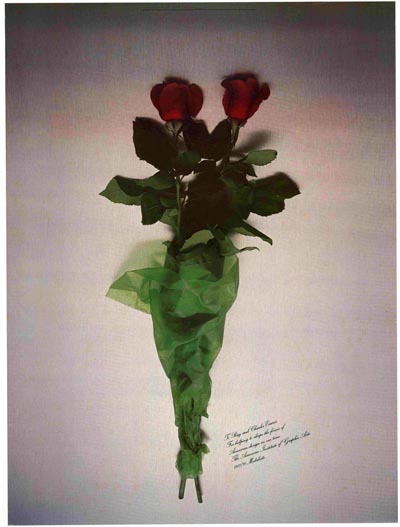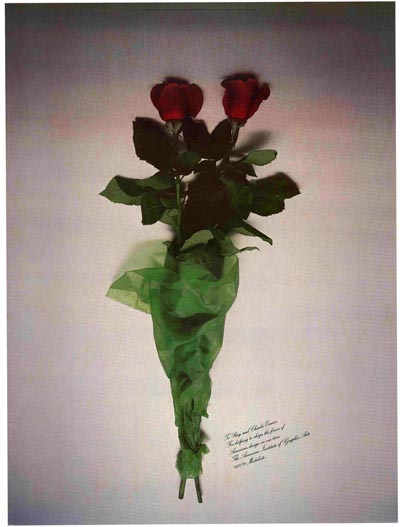TO RAY AND CHARLES EAMES . . . .
The American Institute of Graphic Arts,
Tony Palladino [Designer]
Tony Palladino [Designer]: TO RAY AND CHARLES EAMES . . . . [poster title]. New York: The American Institute of Graphic Arts, 1977. Original impression. 23.5 x 31.5 - inch [59.7 x 80 cm] trim size image printed via offset lithography on a lightweight semi-gloss sheet. Light handling wear and faint spotting from improper dry storage, otherwise a very good example.
The poster reads “To Ray and Charles Eames / For helping to shape the forms of / American design in our time / The American Institute of Graphic Arts / 1977/78 Medalists”
23.5 x 31.5 - inch [59.7 x 80 cm] poster congratulating and announcing Ray and Charles Eames as the AIGA Medalists for 1977. The medal of AIGA—the most distinguished in the field—is awarded to individuals in recognition of their exceptional achievements, services or other contributions to the field of design and visual communication. The contribution may be in the practice of design, teaching, writing or leadership of the profession. The awards may honor designers posthumously.
Medals have been awarded since 1920 to individuals who have set standards of excellence over a lifetime of work or have made individual contributions to innovation within the practice of design.
Individuals who are honored may work in any country, but the contribution for which they are honored should have had a significant impact on the practice of graphic design in the United States.
The American Institute of Graphic Arts [AIGA] advances design as a professional craft, strategic advantage and vital cultural force. As the largest community of design advocates, we bring together practitioners, enthusiasts and patrons to amplify the voice of design and create the vision for a collective future. We define global standards and ethical practices, guide design education, inspire designers and the public, enhance professional development, and make powerful tools and resources accessible to all.
Charles (1907 – 1978) and Ray Eames (1912 – 1988) created more than a look with their bent plywood chairs or molded fiberglass seating. They had ideas about making a better world, one in which things were designed to fulfill the practical needs of ordinary people and bring greater simplicity and pleasure to our lives.
The Eameses adventurously pursued new ideas and forms with a sense of serious fun. Yet, it was rigorous discipline that allowed them to achieve perfection of form and mastery over materials. As Charles noted about the molded plywood chair, “Yes, it was a flash of inspiration,” he said, “a kind of 30-year flash.” Combining imagination and thought, art and science, Charles and Ray Eames created some of the most influential expressions of 20th century design – furniture that remains stylish, fresh and functional today.
And they didn't stop with furniture. The Eameses also created a highly innovative “case study” house in response to a magazine contest. They made films, including a seven-screen installation at the 1959 Moscow World's Fair, presented in a dome designed by Buckminster Fuller. They designed showrooms, invented toys and generally made the world a more interesting place to be. As the most important exponents of organic design, Charles and Ray Eames demonstrated how good design can improve quality of life and human understanding and knowledge.


 Updating...
Updating...